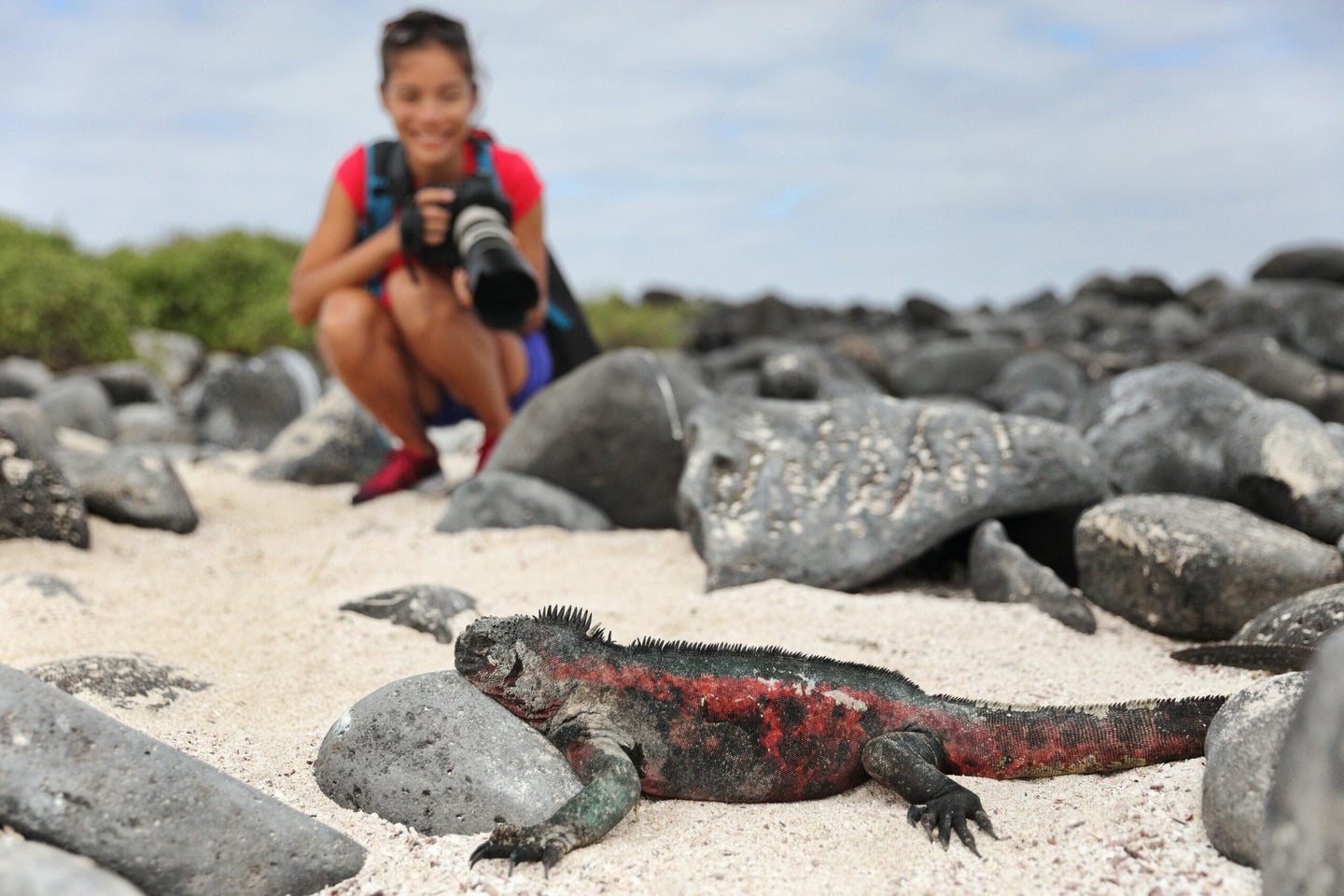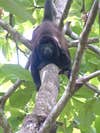How to selfie responsibly, and other tips for not damaging wildlife while shooting
Eco-tourism can be done right, as long as you know what you're doing.

Imagine walking through a lush tropical forest. You hear a rustle overhead, and a half-eaten fruit plops onto the trail. You lock eyes with a howler monkey, before he gives a soft grunt and moves higher into the trees. These magical, fleeting connections with a wild animal can be the highlight of a holiday.

Wildlife tourism like this is booming, raising much-needed funds for and awareness of conservation efforts. However, there is a dark side to this business, and many tourists unknowingly put animals at risk by supporting activities that encourage the capture of wild animals or cause them pain or distress.
But that’s not to say you should avoid wildlife tourism altogether – we just need to be more aware of the impact we can have on the lives of wild animals. Here are five ways to ensure that your wildlife holiday encounter contributes to the animals’ conservation and welfare.
1. Selfie responsibly
Animals used for tourist photos are rarely kept in humane conditions, and all have been removed from their normal ecological and social situations. Brown sloths, for example, are common photo props in Central and South America. They are often handled by many people in a single session, and become distressed by having their limbs or head manipulated for a better photo.
Similarly, the slow loris is a frequent prop in Southeast Asia. Bright sunlight is painful for these tiny nocturnal primates, and many have their teeth removed for tourist safety. Meanwhile, in Southern Africa, lion cubs are taken from their mothers and hand-reared so you can snuggle them. Once they are too big for selfies, however, they often enter the canned hunting industry, where hunters pay to kill animals in an enclosed area.
This doesn’t mean you can’t take an amazing wildlife photo, however – just keep your hands to yourself and follow advice like the World Animal Protection’s wildlife selfie code, which tells us only to take photos if the animal is in its natural home, at a safe distance, and free to move away.
2. Don’t feed the animals
Feeding wildlife leads to a number of serious problems. Sharing food, and even just getting too close, increases the risk of disease transmission between people and animals. Gorillas, chimpanzees and orangutans, for example, are susceptible to a number of human infections, including colds and flu, measles, tuberculosis and pneumonia.
A high proportion of human food in primate diets is also linked to poor coat condition and obesity. And when animals learn to expect food from humans, they can become quite bold, which increases the risk of human-animal conflict. Some long-tailed macaques in Bali have even learned which items to steal from tourists in order to “barter” for food.
Read more: How humans interact with the changing environment is affecting the spread of infectious disease
3. Consider species-typical behaviour
Lack of understanding of an animal’s normal behaviour allows tourists to overlook abuse and contributes to human-animal conflict. With their human-like faces and behaviours, primates already teeter on the edge of uncanny valley, so it’s all too easy to misinterpret their expressions and postures.
One study found that tourists viewing Barbary macaques struggled to recognise aggressive or distressed facial expressions. However, misinterpretation of monkey faces and postures is one of the surest ways to get yourself bitten. When an animal gives a clear warning and a person does not respond appropriately, it is understandable when bites and scratches occur.
Understanding a bit about animal behaviour can also help you recognise abuse. To keep them docile and safe for tourists, some elephants in Southeast Asia undergo a cruel training process during which they are immobilised and beaten, starved and deprived of water.
Working elephants are prohibited from exhibiting their natural behaviours, such as maintaining complex social relationships and ranging many kilometres each day. While you may not know the signs of distress for a species, we can all recognise that wild animals who cannot perform their normal behaviours are not being treated properly.
4. Support local economies
We can only protect wildlife if we protect their communities, and those communities include people. Responsible wildlife tourism should provide funds for both the people and the animals who live in those environments. So do not give all of your money to international corporations.
Stay in locally-owned hotels, try local foods, and embrace the culture of the place you are visiting. The economic impact of tourism can be huge, and making sure your money supports the local area ensures that people have the means to protect their natural treasures in the future.
Wildlife tourism success stories from Tanzania, where villages protect wild spaces in exchange for tourist revenues, to Costa Rica, where wildlife tourism creates sustainable, well-paid jobs for local people, show us that economic development can occur alongside wildlife conservation.
5. Vote with your wallet
Tourist income has a lot of power, so choose where to spend your money wisely. If something feels off to you, don’t participate. If you are not sure, consider the situation. Are the animals captive, or are they performing unnatural behaviours?
Know that “sanctuaries” or “reserves” may still engage in unethical practices, so research your activities before you go with a reliable organisation like the RPSCA or the Humane Society. Share your experiences online and let people know which companies are engaging in questionable practices. When we stop buying unethical animal experiences, people will stop selling them as well.
Tracie McKinney is a Senior Lecturer in Human Biology, University of South Wales. This article was originally featured on The Conversation.